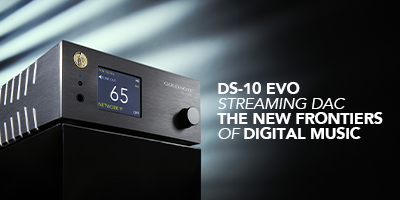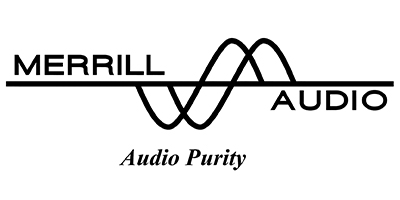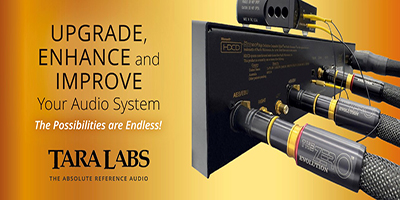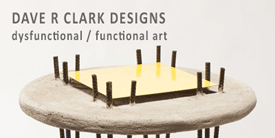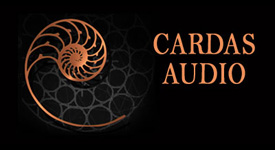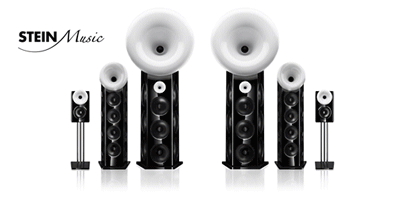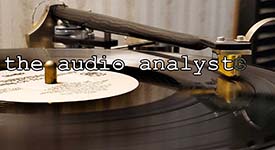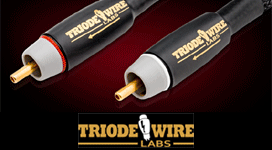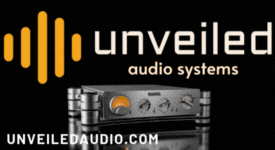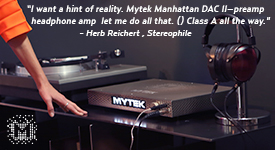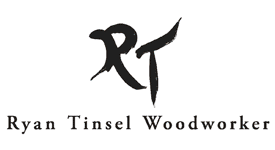Greetings friends, I hope you are doing well. 🙂
I've really been enjoying my music & audio adventures. There's always a bit of serendipity at play in music & audio, and that always makes things more exciting!
I've really been enjoying my vintage-inspired office system lately (above). I have to pinch myself on occasion to make sure that the performance I'm hearing from it isn't a dream, and that it's real, and yes it's real!
Here's the background story: I had the vintage Stokowski Altec loudspeakers in storage, and a fair amount of other fine audio kit sitting around collecting dust while I've been focusing on other reviews.
I became a little worried about having the Altecs in storage due to concerns over temperature variations, so I retrieved them and put them in my office for safekeeping. I didn't intend on setting up an audio system in my office, I was just thinking of it as a safe place for storing my loudspeakers for a while.
Then, of course, seeing the Altecs in the room led to me thinking about "What would happen if I set these gigantic Altecs up in my small office as an audio system?"
For many audio nuts in the USA, a typical loudspeaker setup strategy is to use a rule of thirds/fifths sort of setup where the speakers are positioned out into a room to maximize soundstage / soundspace visuospatial performance, like in the photo above for my Tannoy Westminster Royal SE loudspeakers based audio system in my living room.
However, that approach to loudspeaker setup is increasingly in the minority, particularly worldwide, and is even losing ground here in the USA, except with a few of us hardcore audiophiles.
The reason? Room size. Most music & audio enthusiasts around the world, and increasingly here in the USA, don't have large rooms available to devote to audio, and instead they are installing their audio systems in a way that integrates into their living space in a more sensible way.
The most popular approach for loudspeaker positioning to integrate a high-performance audio system into one's living space is called "room boundary" positioning. That's a fancy way of saying that the music enthusiast is placing their loudspeakers into room corners.
Typically, loudspeakers have to be designed to work optimally in that positioning, like those from Audio Note (UK), for example.
I've had good results with other loudspeakers in room boundary positioning too, like BBC monitor-style loudspeakers, and somewhat surprisingly, my massive Altec A5 loudspeakers that were originally designed to support small to medium sized movie theaters in small town USA, and other sound reenforcement applications, like small auditoriums.
I've got the big brutes - the Altec A5 Voice of the Theatre loudspeakers - installed into room boundary positions in a spare bedroom that I use as my audio-visual room, and that positioning works great.
Altec knew their loudspeakers would be installed in different sized rooms, so they equipped their loudspeakers with adjustable crossovers so the high-frequency compression driver's output could be matched to the low-frequency bass driver output, so the drivers could be made to blend well for listeners in various sized rooms.
When I rebuilt my A5s crossovers I maintained that kind of adjustability, which allowed me to balance the drivers SPL outputs for my listening position in my smaller spare bedroom environment. It turned out exceptionally well, and I found out I could use gigantic loudspeakers in smaller rooms with exceptional results.
The A5s are surprisingly agile on their feet for such big loudspeakers, and they actually performed a lot better than the smaller monitor-style loudspeakers that I've installed into the room.
Big loudspeakers in small rooms - contrary to audiophile orthodoxy - can work exceptionally well, if you can adjust the crossovers so the drivers' SPL outputs are balanced at the listening position.

Polishing the "Stokowski" Altec cabinets with some Kramer's Best Antique Improver. I think I need more Kramer's!
Thinking about the positive outcome with my Altec A5 VoTT loudspeakers is what made me decide to try installing the giant Stokowski Altecs in the same way, in room boundary positions.
The only catch was that I didn't incorporate adjustability into the Duelund CAST tinned-copper crossovers for the compression drivers SPL output when I did the Duelund-Altec Project.
Would it work?
To find out, I stuffed the big Altecs into the room corners, retrieved my vintage Thorens TD-124 turntable from storage, pressed into service my Leben RS-30EQ phono preamplifier, and the glorious little Triode Lab 45 EVO SET integrated amplifier, and setup the audio system just to find out what would happen.
Somewhat to my surprise, the big Altecs worked exceptionally fine in this room, even without the adjustable crossovers of the A5s.
In fact, with this complement of equipment the result was so fantastic I was shocked by its goodness, and this audio system turned out to be one of the most enjoyable audio systems I've ever listened to.
This system lets tons of musical information flow through, gets the music right, sounds fantastic, and is extremely emotionally engaging in the way it connects me with the emotional message of the music.
My office system was a smashing success! Magic!
Just like in the Brothers Grimm's Fairy Tales, there's a moral to this story: Don't let yourself become boxed-in by audio orthodoxy.
Give your idea a try, even if it's unorthodox, have fun with it, and see what happens. Sometimes the result will be brilliant, as with this vintage-inspired audio system.
I'll just sit in there and let the music wash over me and surround me, and absorb the feel-good experience of the way this system plays music - it is so involving.
I marvel at what I'm hearing and feeling from this system, as I'm completely submerged into the soundspace it throws into the room.
If you haven't had a chance to read it yet, check out the first part of the rectifier adventure I've been doing with the Triode Lab 45 EVO integrated amplifier HERE.
Rectifiers are typically the least appreciated, and conversely the most influential vacuum tube on the overall sound quality of an amplifier, of all the vacuum tubes in an amplifier.
I've been doing slooooow-motion comparison-by-contrast listening sessions with a variety of very good rectifiers.
I started with one album - Gillian Welch & David Rawlings' Woodland Studio - and listened to all the rectifiers and recorded my impressions. That's the article at the link above.
Then I moved onto other albums that included contemporary and vintage jazz, opera, classical, rock & roll, and all kinds of other stuff.
What I found was that getting some more time on each of the rectifiers improved their sound quality, and which one I preferred depended somewhat on the album I was playing at the time.
Also, one rectifier that didn't impress me with the first album, ended up impressing me lots more as it got more time on it with other albums.
Which rectifier was it that provided the sweet spot for these comparison-by-contrast listening sessions in this equipment context?
You'll have to wait on that result until I write up the next article about these rectifier adventures.
In the meantime I encourage you to start your own rectifier adventure. Just see what happens with some different rectifiers in your amp. The result might surprise you, and it'll be fun.
Remember me mentioning serendipity, simplicity, and the magic that can unexpectedly result?
That applies in spades to the Ortofon SPU GTX S moving-coil phonograph cartridge that is in for review - what a cartridge!
You know my audio mantra: "Keep it simple!" Simple audio systems - with really good components - just let more music through.
Really good integrated amplifiers like the Audio Note (UK) Tomei 211 SET integrated, or the Triode Lab 45 EVO SET integrated, perform at such a lofty level they put to shame almost all separates approaches to amplification components.
Couple that with high-sensitivity loudspeakers like Altecs - particularly when equipped with crossovers built from Duelund Coherent Audio CAST components - and the result is audio magic.
Add to that magic list the newly released Ortofon SPU GTX S moving-coil phonograph cartridge. It's equipped with a miniaturized step-up transformer (SUT) inside its SPU body that is optimized for it, so you can run it directly into a moving-magnet phono stage, like my Leben RS-30EQ, for example, and get plenty of gain. Keep it simple!
The Ortofon SPU GTX S moving-coil phonograph cartridge plays music full of life, color, emotional impact, with oodles of musical information coming through, and dare I say it - magic.
I haven't told the Ortofon guys yet, but I'm never letting the GTX leave this system - I love it! I hope they are ok with that. 😉
Seriously, the GTX is a really fine phono cartridge, it is relatively affordable for such SPU exotica, and you can read more about it HERE, HERE, and HERE. Use the Jeff's Place search function to find all references for the GTX.
Also, for you Ortofon fans out there, if you haven't already got the Ortofon 100th Anniversary - A Century Of Accuracy In Sound! book, you should get a copy - it is excellent.
Ortofon is one of the great audio companies that have been providing innovative high-performance audio products since the beginning of audio, and they have a great story to tell. Read more about it HERE.
I have great news to report! Frederik at Duelund Coherent Audio just sent me an email that the components for the Duelund-Corona Project have been completed and have shipped! Woo hoo! A huge thank you to Frederik for supporting this project - you're the best! 🙂
To "whet your appetite" I've included a photo of some of the Duelund CAST components from the Duelund-WRSE Project. Beautiful!
You can read more about the upcoming Duelund-Corona Project HERE to tide you over until the project is underway.
I'm continuing to play LPs through the Audio Note (UK) M8 RIAA phono pre and AN-S8 SUT combination to get it fully bedded-in. I've played 95 of the 134 LPs needed to get them bedded-in, so I'm getting closer.
Those of you who have experience with this Level Four and Five Audio Note (UK) kit know how bloody good it is. It rewrites my book of what is possible in performance terms for the vinyl medium. It's also bloody expensive kit, so only a few of you will be able to bring it home with you, but I can tell you that you are in for a treat! The rest of us will continue to dream about how good this kit is to listen to.
I sure have been extremely impressed with what I've been hearing from the M8 RIAA phono pre and AN-S8 SUT combination, and I'm looking forward to telling you all about it in its upcoming feature review for Positive Feedback.
Peter wants to send me his amazing new field-coil loudspeakers to listen to, but I'll have to hold off for a while due to being overly busy, but I'm really looking forward to that sometime after I get the review completed for the M8 RIAA phono pre and AN-S8 SUT combo.
Facebook pal and all around audio genius, Steve Hoffman, recently posted about the new Audio Note (UK) field-coil loudspeakers, and how he was "blown away" by their performance. He's getting a pair.
I can't wait to give them a listen!
If you've been following along over the years, you know that early on in my Hi-Fi life I tried a few CD players, and then abandoned CDs as a serious medium.
I just wasn't hearing & feeling the sort of listening experience from them that I wanted, so I stuck with vinyl as the highest fidelity audio medium I had access to.
That all changed when Peter Qvortrup sent me his CD players to listen to. They are seriously good kit in relaying the magic of music from CD.
I did an about face after hearing Peter's Audio Note (UK) CD players, and I embraced CD as a serious format.
They really changed my audio life by opening up the entire musical canon of Planet Earth - from all the eras of the recording arts - that are now available on CDs.
So the format that I had abandoned had been resurrected in astonishing glory in my life, and I've loved every minute of exploring music from the earlier eras that are available on CD.
In 2022 while attending the Pacific Audio Fest in Seattle I stopped into the impressive Genesis room. They were playing some vinyl over top notch vinyl front ends, master tapes of said vinyl over some very fine reel-to-reel decks, and then playing digital transfers of those same master tapes over some fine digital sources.
It was an illuminating demo, and I found it very interesting to hear the discussion of how the very best digital transfers - quad DSD - sounded indistinguishable from the master tapes played over reel-to-reel.
The order of audio performance has been that master tapes played over R2R machines were the highest fidelity, followed by LPs played over top-notch turntables, and with CDs trailing along in a rather distant third place. That was the story being told.
I might add that the potential performance from Red Book CDs is way better than most people realize, but few have heard the best from Red Book CDs, like you can with the Audio Note (UK) kit, so they don't know that. But I digress ...
But the emphasis of this story was that with the latest advancements in digital transfers from master tapes, the order was now that master tapes & quad DSD transfers of master tapes were on top, followed by vinyl, and then CDs.
I never warmed up to R2R primarily because the albums are so limited in number, they're typically the same warmed over titles popular with audiophiles, and they're bloody expensive. There's no way I was going to be able to build a library of the music I love most with R2R. As crazy as I am about audio, I'm still too practical to indulge in R2R.
Now Editor in Chief of Positive Feedback, David Robinson, has all kinds of cool audio kit at his place, and a fair amount of recording studio kit as well, and David has been telling me for a while now how impressed he is with the transfers of master tapes to digital via quad DSD. Actually David's recording studio kit is probably better than a lot of recording studios have, so you know he's onto something there.
David told me that what is being said about these quad DSD digital transfers from master tapes is true, they are indistinguishable from the master tapes, and he's going to prove it to me, the skeptic.
Cool - I can't wait!
David has told me how impressed he is with the performance of the Gold Note DS-10 streaming DAC, along with its associated power supply, the Gold Note PSU-10 EVO.
You might think of Gold Note for their impressive high-end turntables. Allegedly, quad DSD transfers of master tapes can outperform the best vinyl played back on a high-end turntable like those of Gold Note or others, when played back through the Gold Note DS-10 streaming DAC & Gold Note PSU-10 EVO power supply combo.
Playing back master tapes over his studio quality R2R, or playing back quad DSD transfers of said master tapes, are indistinguishable, says David.
What is equally exciting is what's happening on the studio front with this sort of technology. Because of this quad DSD technology, recording studios can now record direct-to-disk what's being heard at the microphone - the microphone feed from recording sessions - without all the equipment induced signal degradation that occurs downstream from the mics that usually is there. This could essentially take us into a new era of recorded fidelity. Exciting times!
Back to the story: David is coordinating with the good people at Gold Note and they will be sending me the above combo to hear for myself. Thanks to David and Gold Note for this, I'm looking forward to it!
As a result, I'll be starting a new article series about all this: I'll be telling you about my impressions about all these fascinating developments from the perspective of being a newbie to quad DSD, to listening to the various capabilities of the Gold Note DS-10 streaming DAC & PSU-10 EVO power supply combo, over streaming services like Qobuz and Roon, to playing David's transfers of master tapes. This will take some time, but stay tuned, there will be lots of good things to come!
OMG - I just got a text from FedEx that the Duelund Coherent Audio components for the Duelund-Corona Project are out for delivery - that was fast!
Ok, that's all for now. As always, thanks for stopping by, and may the tone be with you!
Postscript 1
Good vibes: I would just like to say "Thank you!" to Dr. Richard Varey and Dr. Paul James over at the Music & Hi-Fi Appreciations website for their kind mentions of me in a couple of their recent articles, Listening Beyond The Algorithm: Why Music Criticism Still Matters, and Music Critics And Audio Reproduction. 🙂
Postscript 2
When something arrives from Frederik you know it is going to be good!
Inside were some carefully packed Duelund CAST copper capacitors and inductors for the Duelund-Corona Project.
The capacitors & inductors mirror-finish top surfaces were covered with protective sheets.
Voilà! The beautiful Duelund capacitors & inductors unveiled!
Closeup of a 3.7mH inductor.
Closeup of a 10.5uF capacitor.
As always, thanks for stopping by, and may the tone be with you!

